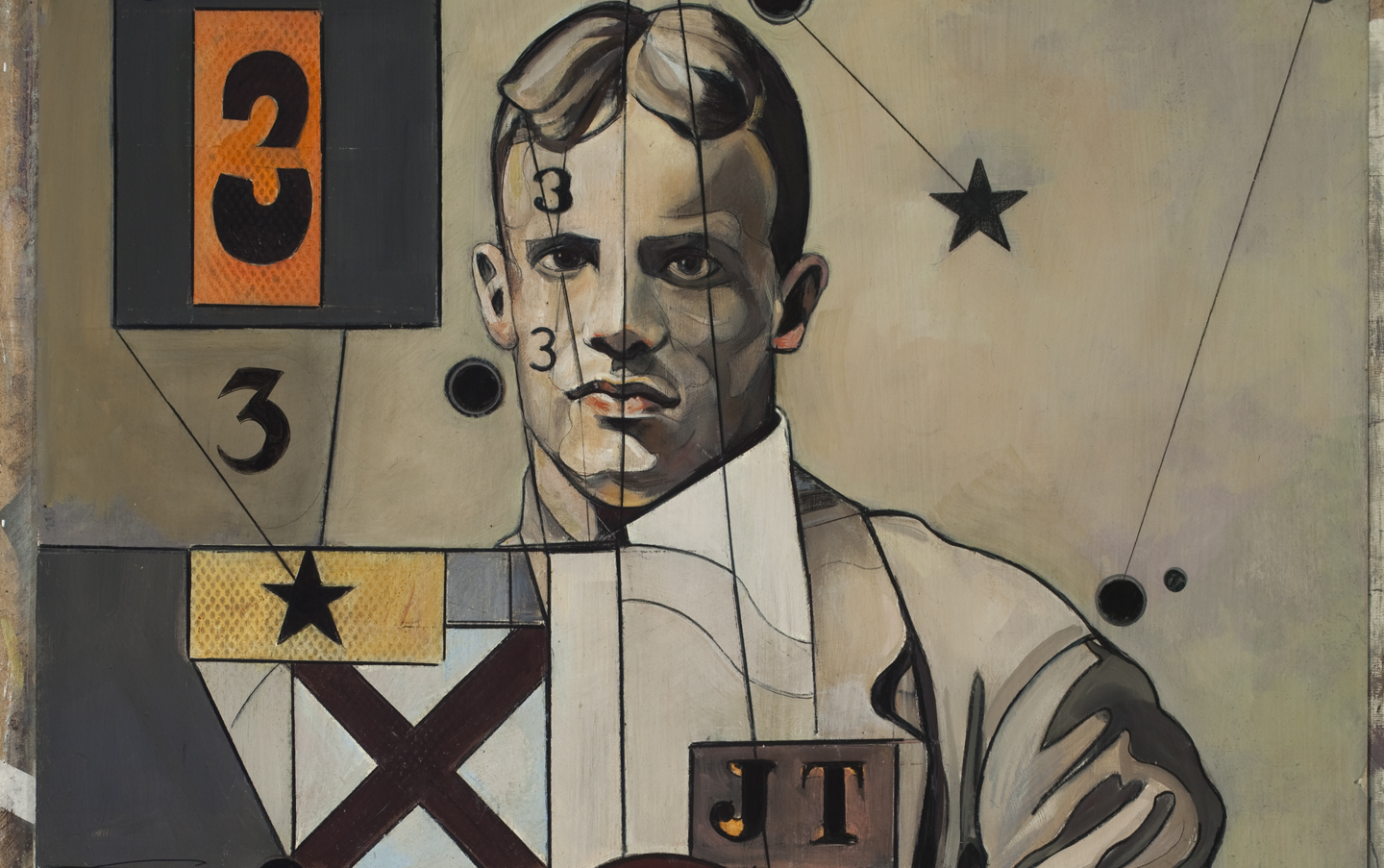SUR Rodney (Sur) explores the world of the Chelsea based, lesbian artist Barbara Sandler who utilises found photographs of long-forgotten men to create inspiring, timeless and unnervingly beautiful explorations of masculinity
“Do you know who I am?” asks a handsome young man in a crisp white jacket, hat and tie, gazing out from what appears to be a weathered postcard from another time and place. Geometric lines gently trace the surface, merging into constellations, quietly mapping stars. “I am your guardian angel,” replies another smartly dressed man, sitting on a chair with legs crossed, his polished shoes gleaming in the foreground. “I am in pursuit of the unknown,” observes another, wearing a serviceman’s uniform and a solemn expression. And so the conversations continues.
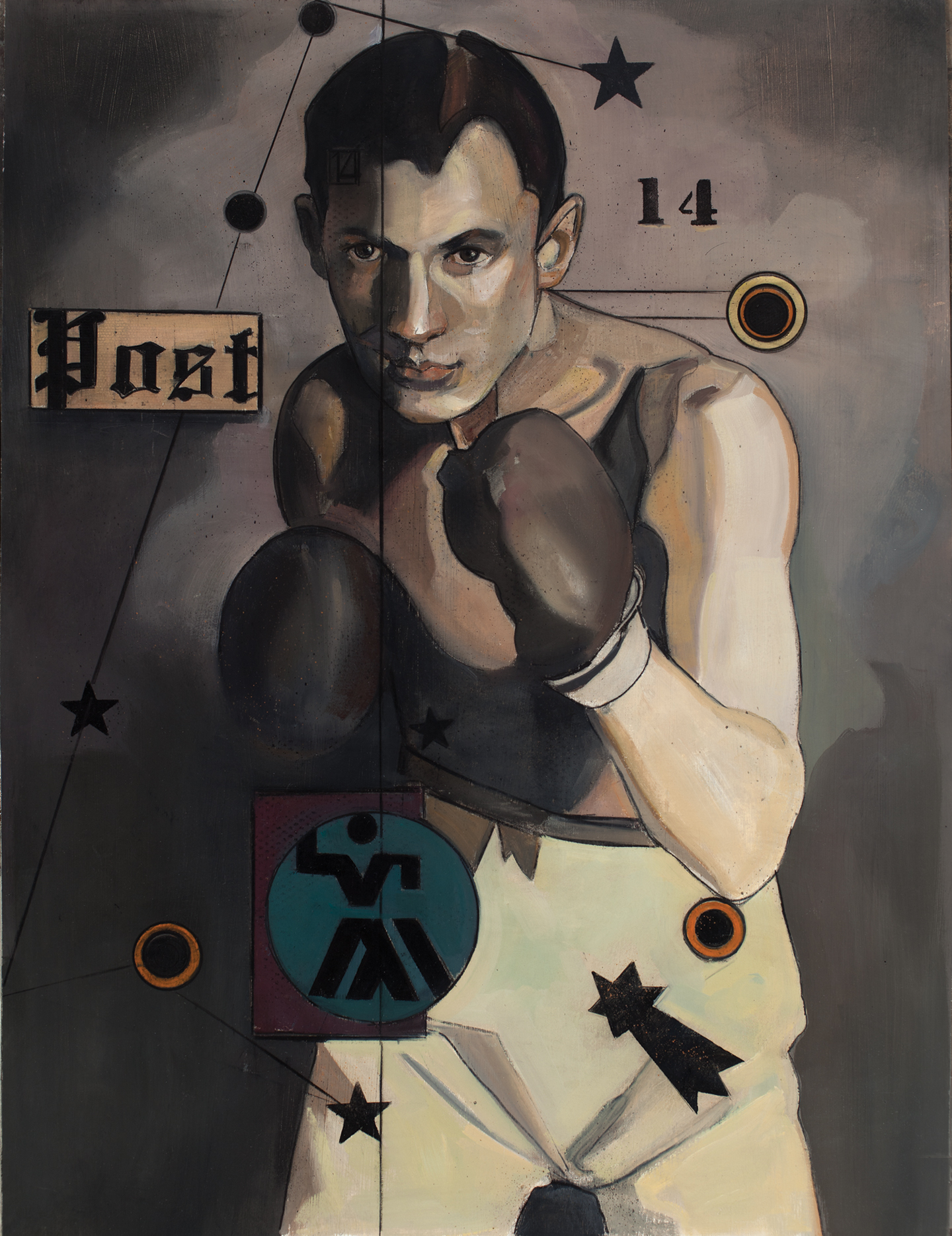
What is the story with each of these men, one begins to wonder. What conversations have they engaged? Are they engaged with them now? Are we? Their appearances are telling us something. Sandler, our visual guide, wants us to see how they travel, and what she found when looking at photographic portraits of men longing for a return of the ‘lost’ from oblivion.
Barbara Sandler finds her men in photographic portraits from the 1930s and 40s, rescuing them from flea markets and while shopping online. Men attired in uniforms: sailors, merchants, businessmen, soldiers and athletes. Men posed in a manner and style that formally presents them as photographic subjects. Not any portrait will do. Sandler is looking for something in each man’s gaze, and a confrontation between it, looking out from the photograph, and her own. The presence of that gaze and the evidence she perceives in his imagined thoughts are what begin the conversation, her curiosity about the captured gaze exploding each man’s story. Stories she finds endlessly fascinating. Her collected photographed portraits tell her their stories while living with Sandler in her studio. The conversation she has with a photograph inspires a painting which reveals traces of that conversations history and depth, and details what there is to consider on any given day.
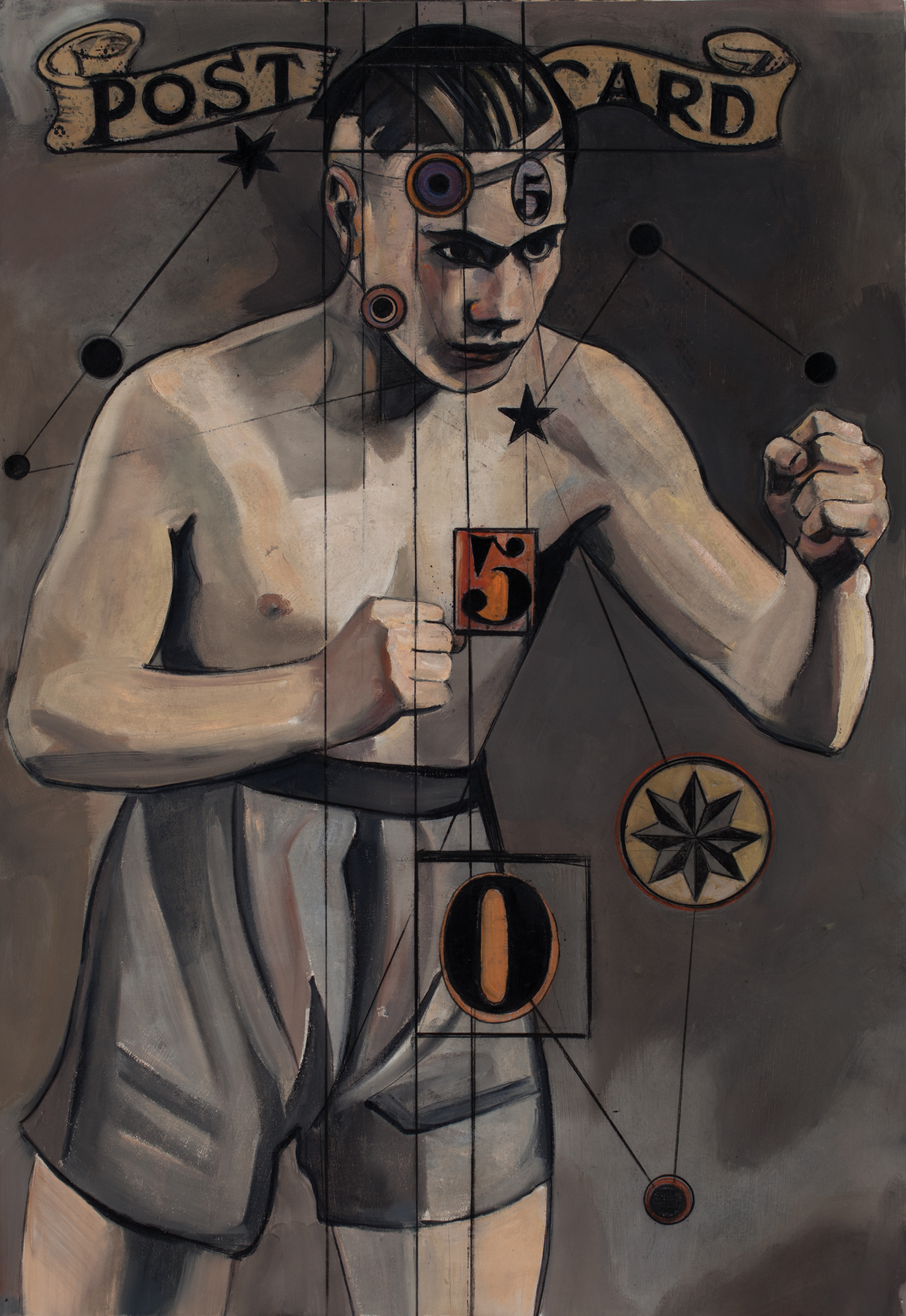
For most of her 40-year career Sandler’s craft has focused predominantly on the male figure depicted in old photographs. Remarkably, there is something necessary in the photographs of men she chooses to paint. A statement made by her gallery addresses another concern. “As an artist and woman coming of age at the apex of the feminist movement and solidly rooted in figuration, Sandler’s decision to eschew the female figure from her work was both the articulation of an aesthetic preference and a conscious rejection of predetermined readings.” I concur.
Sandler allows time for a conversation to flow with
her found photographed men, and after her
dialogue with one in her studio, will craft what a conversation looks like as a painting
She takes her cues from photographed portraits. Do they have something to say to her? And what would that look like? Most importantly, what does she have to say to them? She allows time for a conversation to flow with her found photographed men, and after her dialogue with one in her studio, will craft what a conversation looks like as a painting.
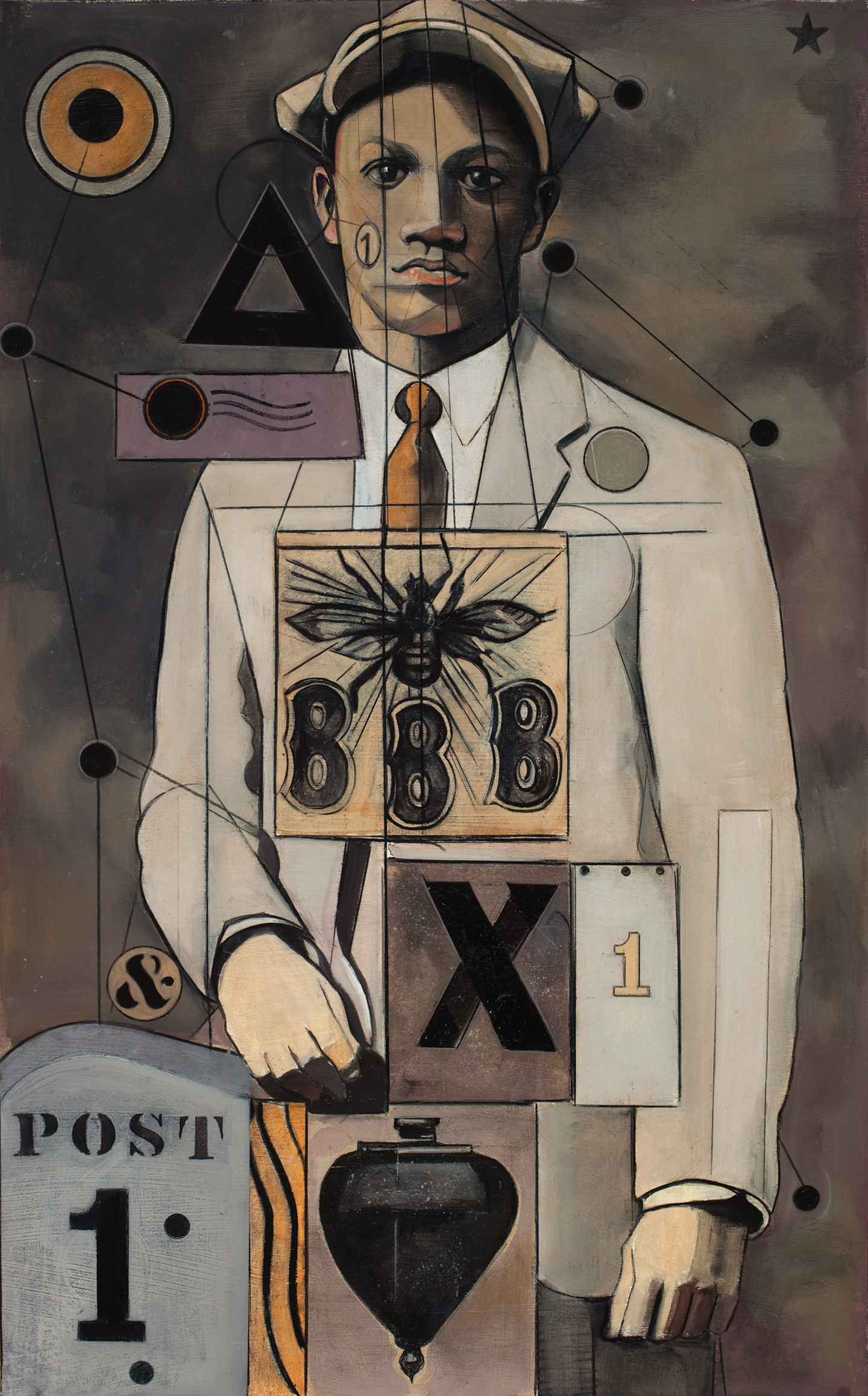
Alone with her subjects, she studies their photographed images, pondering inferences and ruminating on the characteristics of her men, each with his distinct qualities. Her companions she anoints with layerings of iconographic symbols, numerals, scratches, brushmarks and subtle intimations of painted-over markings. Compositions and details are worked out in small collage form as studies, each growing to suit its photographed subject as each sits in her studio for a reading and conversation while travelling through time. These collaged studies assist and inform the painted compositions she imbues with the warm greys, browns and sepia tones of her palette, captured from the photograph’s various periods. Primary colours she uses sparingly to accent or shape. Her diagnostics, revealed in the meticulous layering of symbols, numbers, and surface markings, are tailored to suit the essence of each man’s spirit, guiding us to recognise their bearings, brought on through wealth, luck, or circumstance. Sandler takes her pleasure in exercising a romantic vision of portraiture, leaving us to reflect on the appearances and surfaces of masculine intrigues as she presents them with acute sympathy toward and understanding of what she and her companions travels in time will tell. Finding implied histories, Sandler presents us with evidence of what they contain and what their stories reveal real, or imagined now made real.

A decade ago, Sandler produced a series of portraits where each man was, as Dominque Nahas so precisely describes, a corps morcell (the body in pieces). What appears to be a surgical dissection of the physiognomy of the male figure allows for a certain freedom to reveal what is possible; the delicacy and the horror of a boldly creative and disturbingly, defiantly original painted portrait. The treatments of the men pictured, exposed through graphic lines, incisive markings on the surfaces, and glazing, lay bare the subjects with a complex quality of intrigue and terror in remarkable balance.
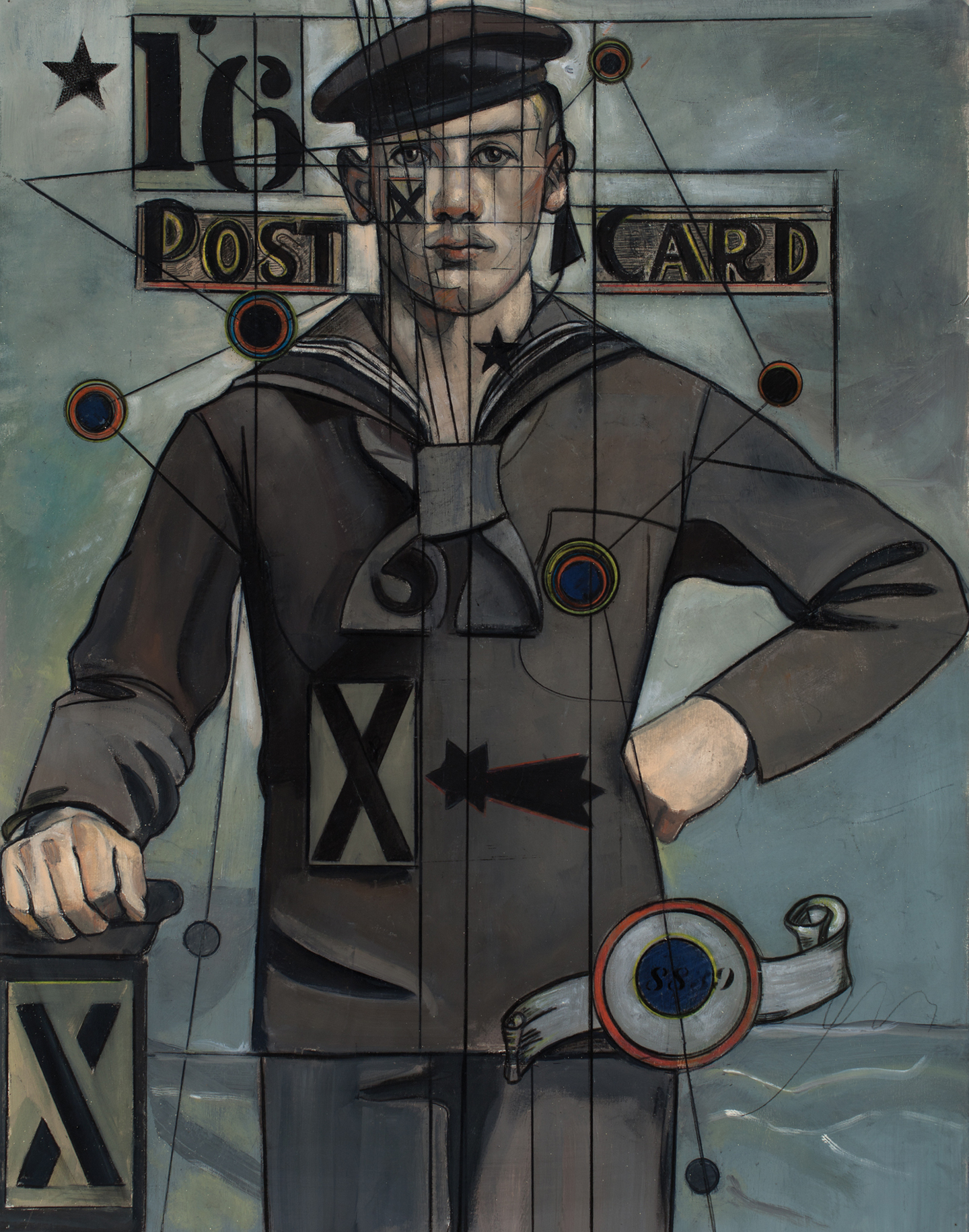
An accomplished illustrator with a keen design sense, Sandler holds forth remarkably. In her paintings from the mid-1980s, notably Castor and Pollux, twin brothers who appeared in several prominent myths in Greek and Roman mythology become Bavarian twin boys, literally and figuratively pictured seated in a cameras foreground. In this case, the photographed twins are stand-ins for the mythological figures. The painting suggests a composite collage of the artist’s own design, incorporating astronomical mappings referencing associations to the heavens and mythology. Sergeant Cribb, another painting commissioned for a poster by the Public Broadcasting Service (PBS) to announce the Mobil-sponsored Mystery! television series, has Cribb positioned within a well-balanced composition apprising us of his story.
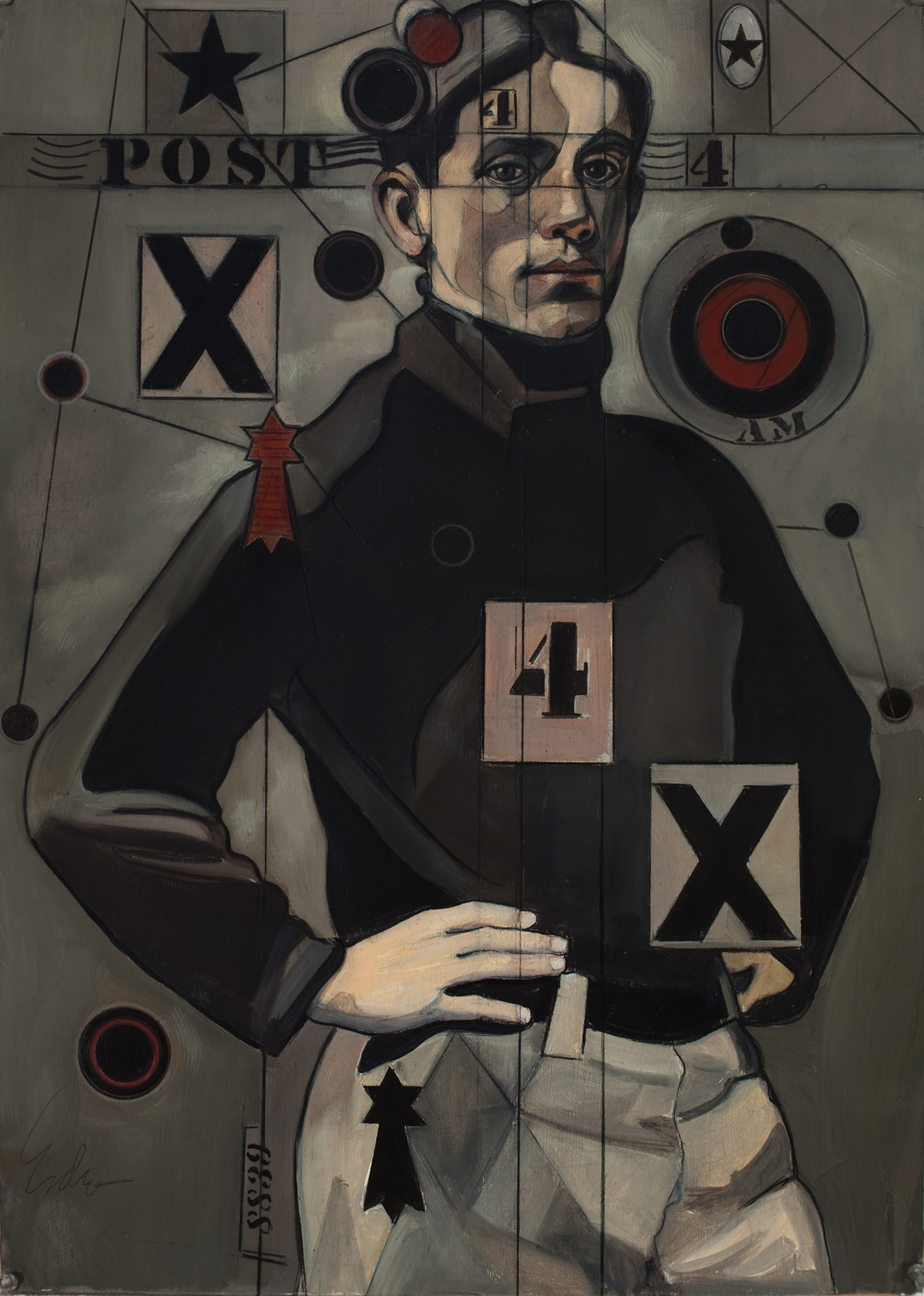
Several years later I was introduced to a series where the readings of the subjects are present in isolated moments in time, rather than as figures with any identifiable existence. We know nothing about them – they exist each purely for a moment captured in a painting. In this series Sandler realises the wondrous nature of a painted figure combined with words that deliberately inform our reading. The figure present in the painting is at a loss for meaning without the support of the words ‘robbed of sleep’ or ‘day dreaming’. Let us examine Tomorrow Is Alive With Memories, a prime example of Sandler’s skill in capturing what the image is saying. A man in profile pauses with a lit cigarette held in a fist of fingers. Resting at his upper torso is, painted as if a memory, a picture of a moment frozen in time. The atmosphere in the painting suggests a momentary thought, a moment remembered, and what that moment looked like. The hue, light, contrast, and treatment of the paintings surface conspire to evoke a sense of a memory reclaimed.
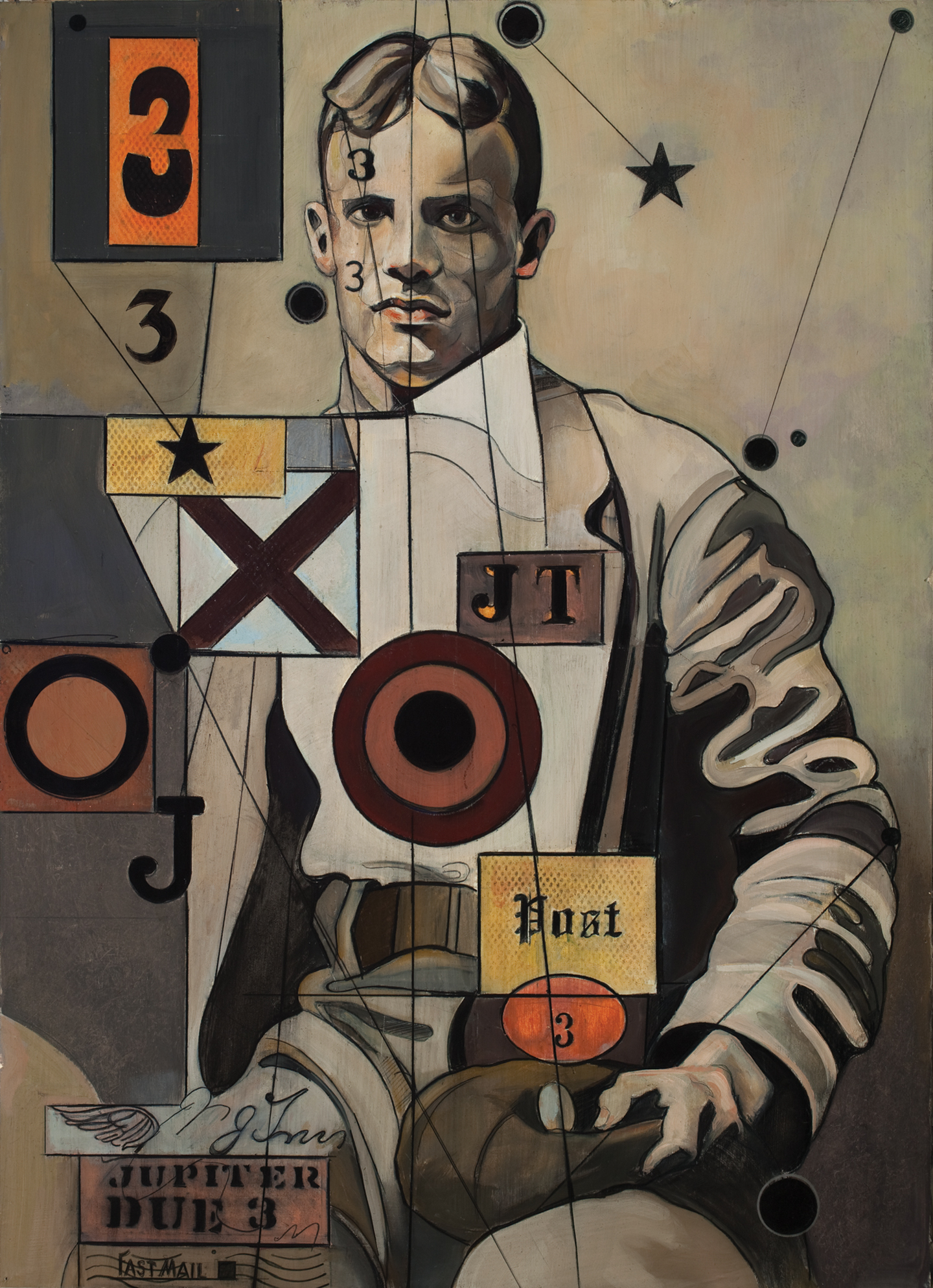
One could say that Sandler’s work demonstrates an attempt to reclaim what for her a photographed image communicates from a certain lost moment in time and from the posing figure. Sandler re-imagines her subjects as having something to say, enhancing their characters while interpreting possible meaning through the beauty of surface, palette, and design, thoughtfully rendered to engage our looking.
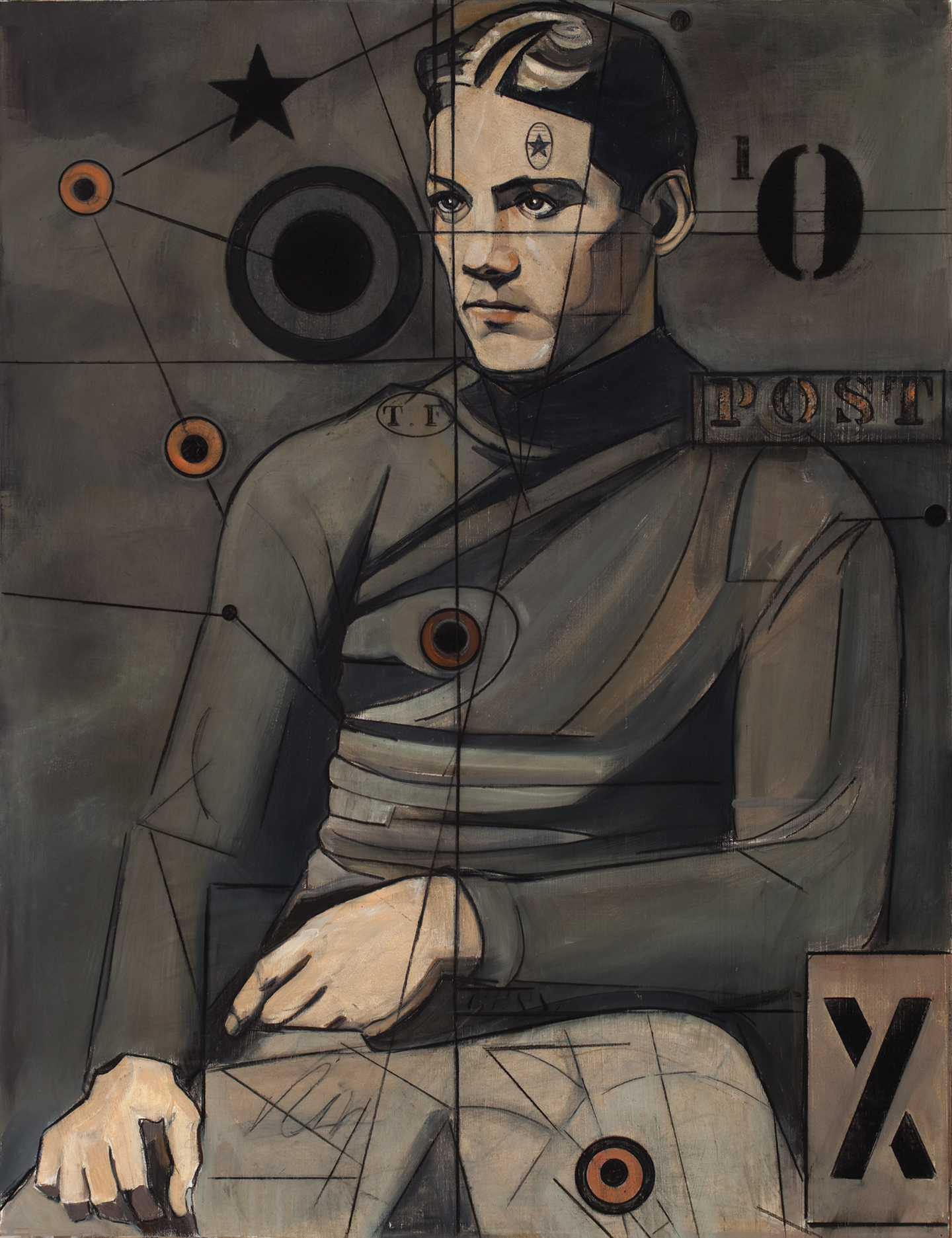
During the late 1980s and into the 90s, Sandler produced a series of large paintings based on widely circulated photographs of the dancer Vaslav Nijinski. Choosing to examine the dancer’s metamorphosis, by incorporating animals and symbols she relates to him, she has us consider the effects of his transformation. Stage role to human self, man as animal, animal as self, thoughts culled from her readings of Nijinski’s diaries, she brings glimpses to life with titles like Defeated Ambition, Beasts of Trickery and Treason and God’s Seed. Executed in oils on sheets of 100% rag paper in a large, five-foot format, the series has the appearance of works on canvas. Her thoughts on all there is to consider in reviving her photographed subjects from one surface to another inhabit impeccably crafted surfaces. Sandler explores a discourse that has us musing on the qualities inherent in identity and nature, reconstructing memory as truths plucked from his story, crafted by her pursuit of the unknown.
SUR Rodney (SUR) is an archivist, curator, poet, essayist, videographer, conceptual and performance artist, artistic collaborator, community activist, lover, surrealist and popular muse. He lives between London, Montreal and New York City.
